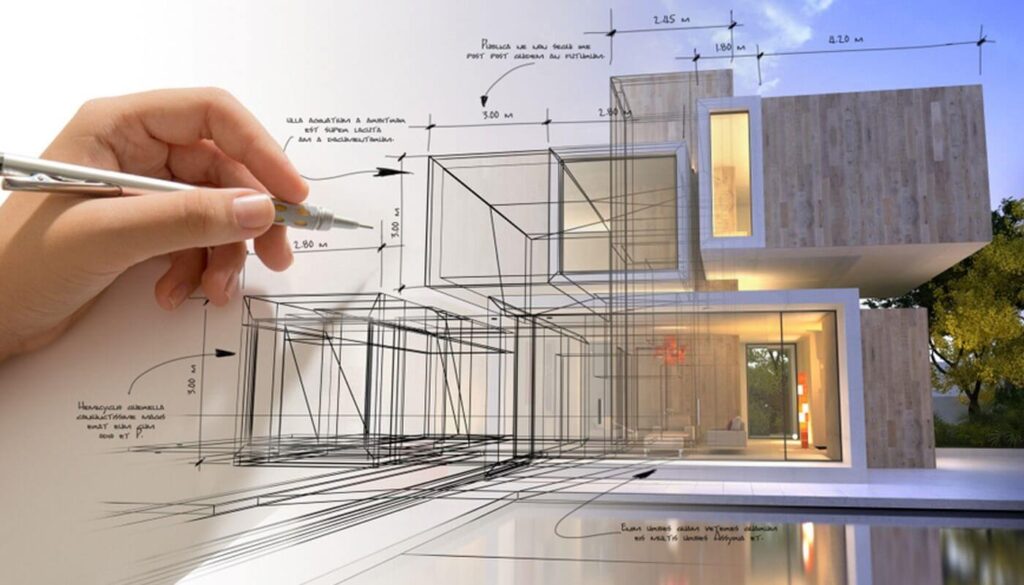Leading Factors to Pick CDA Architects for Your Residential or Commercial Designs
Leading Factors to Pick CDA Architects for Your Residential or Commercial Designs
Blog Article
An Extensive Review of Building Styles and Their Influence on Modern City Planning and Development
Building designs have actually long served as a mirror to the societal values and technological innovations of their time, playing a crucial function in shaping modern city preparation and development. From the grandeur of Neoclassicism to the practical method of Brutalism, each design has actually introduced distinct concepts that affect urban aesthetic appeals and functionality.
Historical Overview of Architectural Designs

As cultures transitioned with the Middle Ages, Gothic design emerged, characterized by its verticality and complex describing, mirroring the spiritual aspirations of the period. The Renaissance noted a resurgence of classical ideals, combining art and architecture in innovative methods that influenced succeeding styles throughout Europe.

Today, architectural designs remain to develop, driven by globalization and sustainability issues, mirroring a vibrant interaction between heritage and innovation. This historical introduction highlights the value of design as a mirror of societal development and as a catalyst for metropolitan development.
Secret Architectural Styles Explained
The diversity of building styles reflects the myriad impacts that shape our constructed environment, each embodying unique characteristics and social importances. Key building designs consist of Classical, Gothic, Baroque, Innovation, and Postmodernism, each standing for distinct historical contexts and aesthetic viewpoints.
Classic architecture, rooted in ancient Greece and Rome, stresses balance, percentage, and the usage of columns (cda architects). In comparison, Gothic architecture, flourishing in the center Ages, is characterized by pointed arches, ribbed safes, and flying buttresses, creating an aerial high quality in cathedrals. Baroque architecture, emerging in the 17th century, is noted by majesty, elaborate embellishment, and a dynamic interplay of light and shadow
Innovation, which gained energy in the very early 20th century, prioritizes function over kind, utilizing new products like steel and glass to produce minimal structures. Postmodernism, reacting versus the austerity of Innovation, accepts eclecticism and historical recommendation, commonly integrating playful aspects and irony.

Influence On Urban Preparation
Fit the growth of cities, architectural designs considerably influence metropolitan planning choices. The selection of architectural design commonly dictates the aesthetics, capability, and overall personality of urban atmospheres. Innovation, with its emphasis on minimalism and performance, urges open spaces and the assimilation of innovation, forming city designs that focus on efficiency and ease of access. On the other hand, standard designs may highlight historic conservation, leading to urban styles that keep social heritage and advertise pedestrian-friendly environments.
Furthermore, architectural styles can impact zoning regulations and land use policies. Urban planners should consider the prevailing architectural trends when developing districts, guaranteeing that new developments harmonize with existing structures. This factor to consider cultivates natural city landscapes and boosts area identification.
The application of particular architectural styles can additionally affect socioeconomic variables within a city. For instance, premium modern styles may attract affluent homeowners and organizations, bring about gentrification, while more affordable real estate remedies could focus on useful and sustainable designs to suit varied populaces. Eventually, the interaction between building styles and urban preparation creates vibrant cities that reflect both historic context and contemporary requirements, shaping the lived experiences of their citizens
Sustainability and Modern Design
Building styles play a check my site crucial function in addressing modern challenges, especially in the world of sustainability. As metropolitan locations expand and YOURURL.com ecological concerns increase, modern design increasingly welcomes lasting layout principles that focus on power efficiency, source preservation, and minimal environmental influence.
Contemporary architectural motions, such as biophilic layout and green design, supporter for structures that balance with their environments, making use of natural materials and advertising biodiversity. These designs often integrate renewable resource sources, such as solar panels and wind generators, to lower dependence on nonrenewable fuel sources and lower carbon footprints.
Additionally, the assimilation of advanced technologies, such as wise structure systems, boosts power monitoring, optimizing resource usage while making sure occupant comfort. Innovative water administration methods, consisting of rain harvesting and greywater recycling, more add to lasting metropolitan settings.
Especially, sustainability expands past ecological problems; it incorporates social and financial measurements. By cultivating neighborhood wellness and promoting inclusivity, contemporary architectural styles line up with lasting advancement goals. The evolution of building methods continues to shape resistant cities that not only meet the needs of the existing however also guard the future for generations to come.
Neighborhood Interaction in Design
Area interaction in design works as a crucial bridge in between designers and the populations they offer, making sure that the developed environment mirrors the requirements and aspirations of its customers. This collective process welcomes community participants to contribute their insights and choices, promoting a sense of possession and obligation towards the rooms they live in.
Efficient area interaction uses different approaches, such as workshops, surveys, and public forums, to collect varied point of views. These strategies help with a two-way discussion, allowing engineers to understand regional contexts while encouraging locals to articulate their issues and needs. This inclusivity not only improves the layout quality however additionally promotes social equity by attending to the unique difficulties encountered by marginalized teams.
Furthermore, area involvement can result in ingenious remedies that might not arise in a traditional style procedure. By integrating local understanding and social values, designers can develop spaces that resonate even more deeply with customers, redirected here enhancing functionality and sustainability. Inevitably, focusing on community interaction in layout procedures results in environments that support social communications, assistance health, and strengthen neighborhood connections, therefore playing a pivotal function fit modern urban landscapes.
Final Thought
Building styles have actually greatly affected contemporary city planning and growth, showing developing cultural and technical contexts. As cities proceed to grow and adjust, the recurring dialogue between building heritage and contemporary design concepts will certainly continue to be necessary in producing comprehensive, lively spaces that boost high quality of life and promote social equity.
Report this page